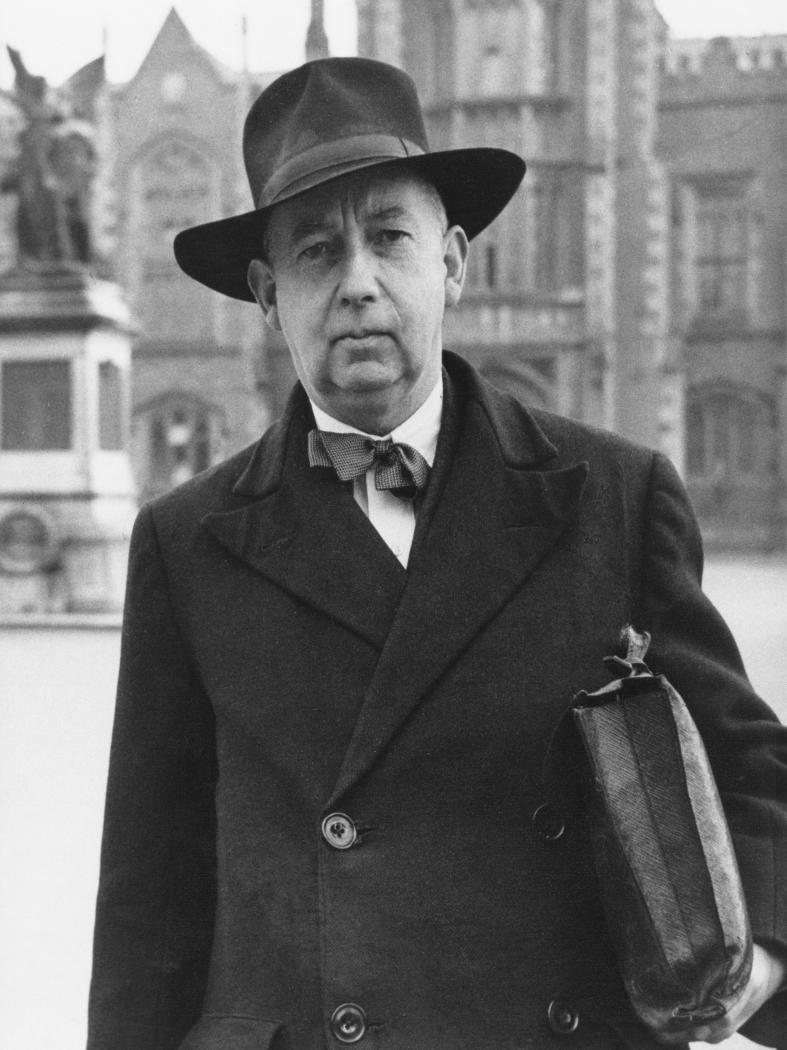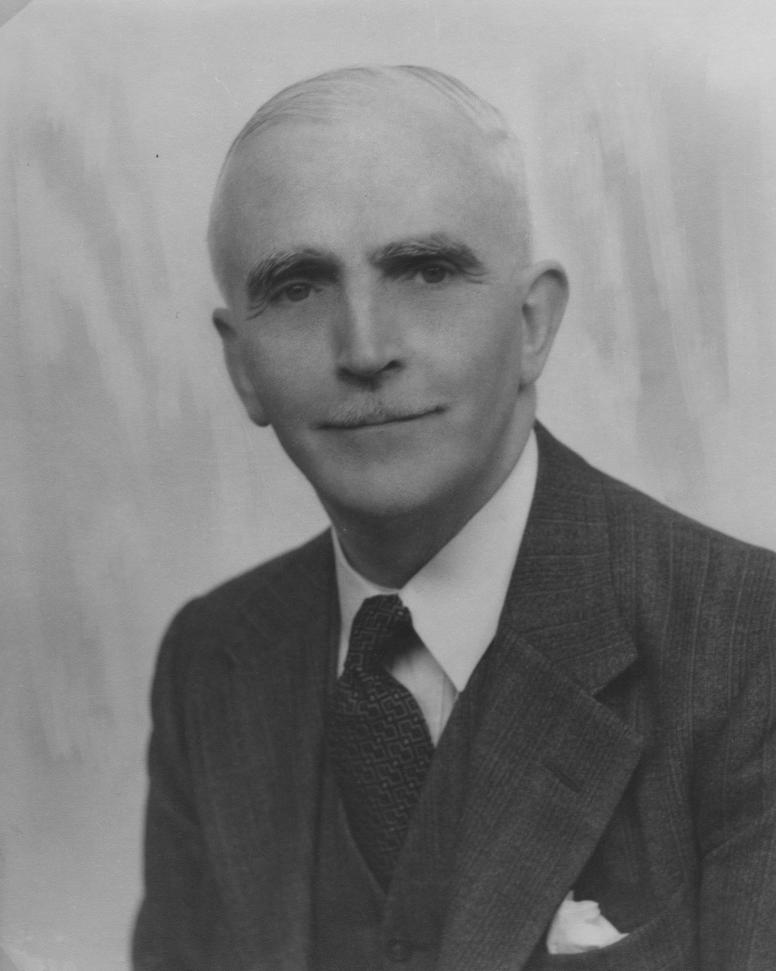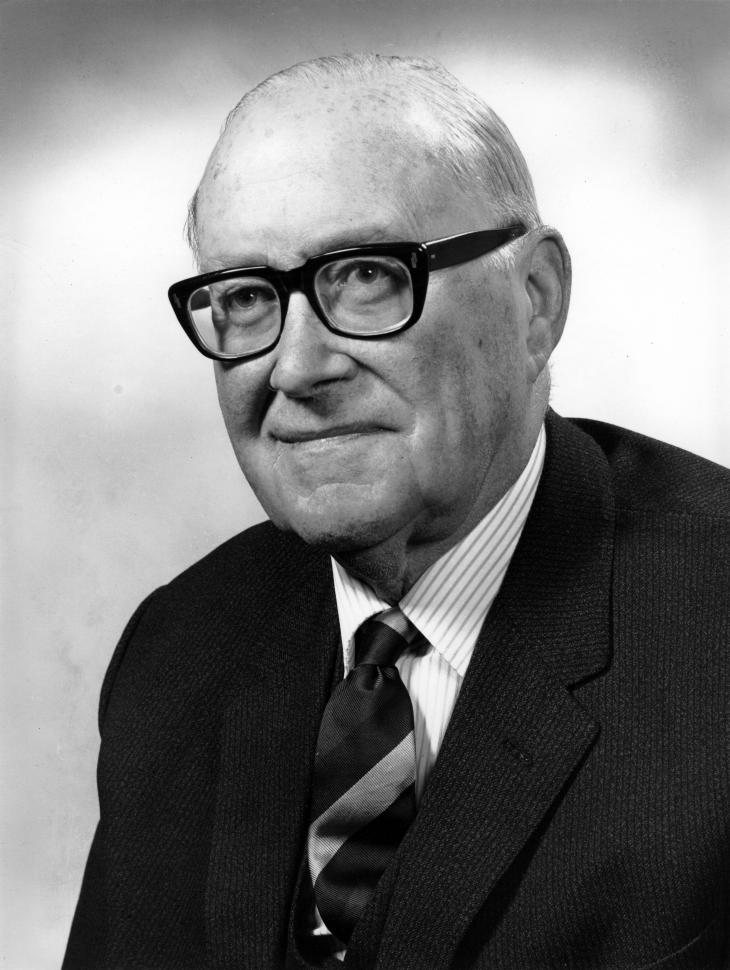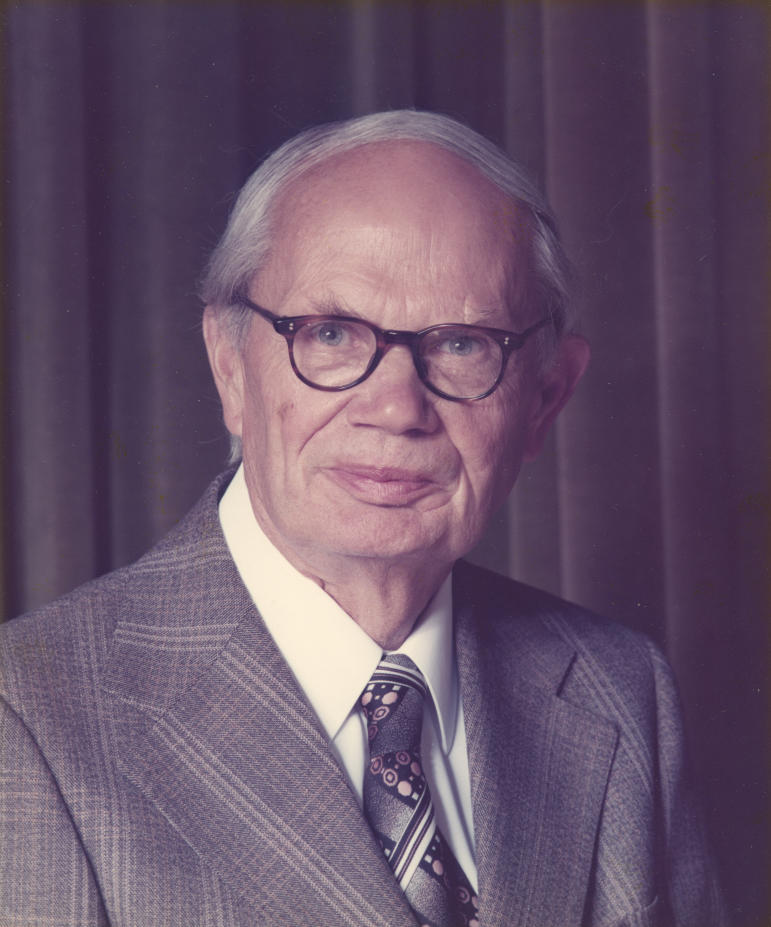There is a long shelf of bound volumes of the Ulster Medical Journal, about four feet long, in the Council Chamber of the Society, in the Whitla Medical Building. I don't suppose anyone else has a personal set from Volume 1, but it makes interesting reading as an introduction to medicine and medical education in Northern Ireland since 1932. There is also a slim minute book recording in neat handwriting the deliberations of the editorial board from 1931 to 1939. On 4th June 1931 they agreed that “the pages of the journal were to be open to any scientific contribution, provided it was of general interest and value”. They hoped, then as now, “to stimulate the younger Fellows and Members of the Society to do research work, and publish their findings in the journal”. A quarterly editorial was suggested, written by one of the four professors on the board – Surgery, Medicine, Gynaecology and Pathology – and an abstract of each meeting of the Society. Panel practitioners from Belfast and the country regions were to produce a page on their activities and concerns. There was “considerable discussion on the literary style and merit of articles sent in for publication, and it was agreed that the alteration of any such article was within the province of the Honorary Editor”. In cases of difficulty, however, it was decided that such articles be submitted to Professor J. A. Lindsay, (the previous Professor of Medicine).
Our new editor and his board no doubt have similar aims and objectives, and we the readers will certainly support him. Whether the four successors to the original University Professors would agree to produce editorials on demand, and whether it would be possible on one page to discuss the business of the National Health Service general practitioner, either town or country, is debatable. But Professor Patrick Morrison has our complete confidence in making editorial alterations of literary style and merit as he sees fit – with or without an elderly retired academic as a final court of appeal on matters of taste and judgement.
Dr RH HUNTER: EDITOR 1932–1942
Volume 75 No 1 of the Ulster Medical Journal in 2006 may not seem a particularly noticeable issue – the first issue appeared on 1st January 1932 – “To inaugurate a new quarterly medical journal to replace the irregularly issued Transactions, to increase the usefulness of the Society, and to help in some small way medical advance in Northern Ireland” – a brave statement by the new editor, Dr RH Hunter, at that time Senior Lecturer in Embryology in the Department of Anatomy at the Queen's University of Belfast (fig 1). People of my generation probably remember him as Dickie Hunter, the resplendent ringmaster of Doctor Hunter's Circus, in the old Hippodrome theatre, in the late 1940's: but that was a retirement job, self selected due to his knowledge of the comparative anatomy of circus animals derived from a part-time post as consultant to the Belfast Zoo. He had also been Secretary to the University, a senior and responsible position during the war, when there were very few administrators – he is said to have presented graduates for their degrees (in the Presbyterian Assembly Hall, prior to the completion of the Whitla Hall) in the same stentorian tones he used in the circus ring across the road. That was when the well known portrait was painted, “the man in the black hat”, now hung in the Great Hall (fig 2). Sir Ian Fraser's comment that the artist James Gunn requested him to put his overcoat, scarf, gloves and hat back on again to improve the pictorial aspect of the painting is perhaps apocryphal, but the result was memorable.
Figure 1.
Dr RH Hunter. Editor 1932–1942.
Figure 2.
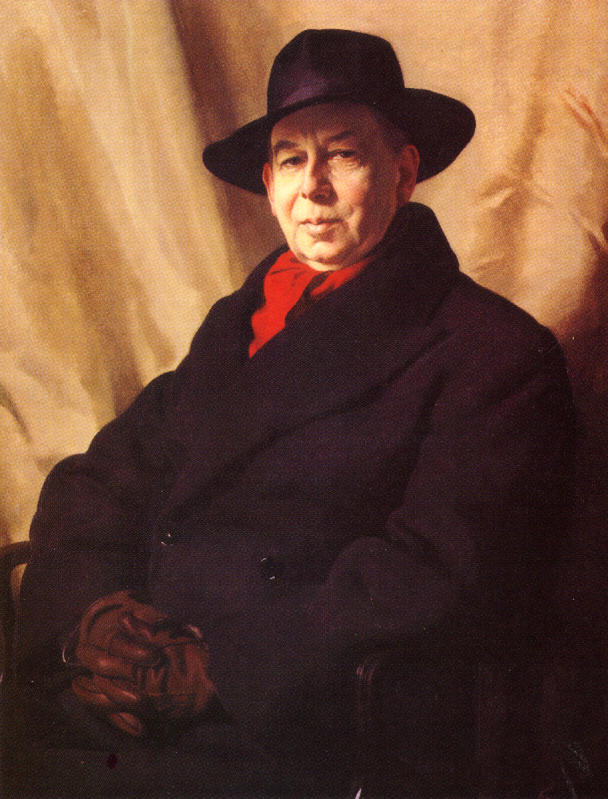
Dr RH Hunter “The man in the black hat”. Reproduced with permission of Queen's University Belfast.
The first issue of the Journal is still worth reading: the editor requested support from the general practitioners of Northern Ireland in producing a journal worthy of the Medical School which it represents. I noted an elegant “plea for the myxoedematous” by Dr Eileen Hickey, Physician to the Mater Infirmorum Hospital – “when myxoedematous patients arrive in the consulting room they have often surprisingly few complaints. They do not feel well, they have not much energy, they cannot walk far, they are easily tired, they feel short of breath, dizzy etc. In other words their vague complaints might be the complaints of almost anyone who had been leading a life rather too strenuous for their capabilities, physical or mental. They do not mention that their skin has become dry, their hands coarse and lined, they forget that their hair is falling out, and that they rarely feel warm – in fact they rarely mention any of the classical features of the disease”.1 What a lovely piece of writing – present day editors yearn for doctors who can write good English! And Dr Hickey makes her important point, long before thyroid function tests or routine screening by the practice nurse. The advertisements were interesting too – “The profession demands a reliable car – buy a Ford 8 hp for £120” but the annual salary of a newly graduated House Physician was not much more than that.
Dr ROBERT MARSHALL: EDITOR 1943–1951
In 1943, in the depths of World War II, Dr Robert Marshall took on the editorship (fig 3). There is a short note on Ulster doctors and the war – 15 killed, 16 missing2 including some who survived, (Dr JF Pantridge among them), and some who did not, (Dr Humphrey Thomson, son of Sir William Thomson, Professor of Medicine). Dr Marshall's own son, Dr RJ Marshall also died in the war, in an aeroplane accident in India. The Thomson Room and the Marshall Room in the Medical Library remind us of them, although the eponymous sparsely furnished computer rooms in the refurbished Mulhouse Building at the Royal Victoria Hospital are only a shadow of their former elegant oak panelled glory in the Institute of Clinical Science.
Figure 3.
Dr R Marshall. Editor 1943–1951.
The Council accepted the resignation of Dr Hunter, noting his “sane criticism, profound scholarship and self-effacing efficiency”. He had earned “the very warm thanks of Ulster doctors for his work – the fact that it has been a labour of love in no way lessens either its effort or its value”.3 Perhaps all his editorial successors can agree with that sentiment, and hope that we have earned it as well. Robert Marshall – Bertie to his colleagues – is remembered as a punctilious, cultured and widely read doctor – a cardiologist in the days before they were subdivided into Type A or Type B. He had problems in keeping the journal going – there was a great shortage of paper during the war and the number of issues was reduced from four to two per year – there were still only two issues produced every year until this volume when the number has been increased to three.4 Perhaps it was he who encouraged a historical and literary aspect to the contents, but he also had the vision to devote a whole issue in 1944 to the scourge of tuberculosis, especially in University students. That was when compulsory health examination for students originated. He drove a large black Daimler motor car, and the House Physician in Wards 5/6 in the Royal Victoria Hospital was expected to carry his bag out to the car, parked in the small front quadrangle as was the right of corridor consultants. The story that there was a second large black Daimler coming behind to transport the large cumbersome electrocardiograph is untrue!
Dr RWM STRAIN: CO-EDITOR 1948–1951
Dr RWM (Bill) Strain, joined Robert Marshall as co-editor in 1948. He was perhaps more of a dilettante physician, with a happy cheerful smile (fig 4). He made his name as the historian of the Ulster Medical Society, and in particular with a well remembered personal account of all the occupants of University Square when it was the Harley Street of Belfast.5 His position as Physician to the Belfast Charitable Society, Clifton House, although not particularly financially rewarding, did give him the opportunity to research and write the history of the charity and en passant of the early water supplies of the town of Belfast. He spent happy days exploring the old water course from the Vice Chancellor's lakes at Lennoxvale, through Conduit Street off the Ormeau Road, to Fountain Lane in the city centre, where some old wooden water pipes were found to prove his point. In his post war article on ‘The Heraldry of Medicine’, perhaps stimulated by the snake on the badge of the Royal Army Medical Corps he pointed out the difference between the single serpent of Aesculapius, the God of Greek Medicine, and the two serpents entwined on the caduceus of the winged herald Apollo in his guise as a healer.6 Aesculapius was summarily executed by a thunderbolt from Zeus because his success in prolonging life on earth was reducing the population of Hades – following a complaint by Pluto, the Lord of the Underworld. Was this the first complaint about a doctor, and was the punishment justified?
Figure 4.
Dr RWM Strain. Co-Editor 1948–1951.
PROFESSOR JE MORISON. EDITOR 1952–1984
Dr John Edgar Morison – later Professor – took on the Editorship in 1952 (fig 5), the same year he and his wife were married, and he had just finished writing his major textbook on Fetal and Neonatal Pathology. John Edgar Morison is still with us, aged 93. He did not realize then that he would remain Editor for 32 years – but his hard work and devotion set the style and appearance of the Journal, and gradually improved the scientific as well as the clinical and historical content. He is well remembered by many of us whose early efforts at medical writing would be transformed by his usually sympathetic editorial pen. The journal prospered, and became internationally recognised, with citations in Current Contents as well as the Index Medicus, the predecessor of Medline. Perhaps a pathologist is best placed to be an editor of a general medical journal – a broad knowledge of disease is less easy to acquire now, with our highly specialized training regulations.
Figure 5.
Professor JE Morison. Editor 1952–1984.
PROFESSOR DAD MONTGOMERY. CO-EDITOR 1975–1984
Desmond Montgomery became co-editor in 1975, and remained in joint harness until 1984 (fig 6). His own joint textbook on Clinical Endocrinology had gone to two editions, and he was blessed with the ability to produce clear and concise medical prose without the need to revise and rewrite again and again. His high standards in clinical medicine were translated to the written page. I remember a wry comment that John Edgar Morison still kept much of the editorial power to himself, but the team of Morison and Montgomery continued the general advance and improvement during the decade.
Figure 6.
Professor DAD Montgomery. Co-Editor 1975–1984.
PROFESSOR DR HADDEN. EDITOR 1984–1995
When I inherited the journal in 1984 (fig 7) it was the time when modern computerized printing processes were starting. I explored the printing works of Dorman & Sons, who had been printing the journal in Hope Street in an old single storey mill behind Great Victoria Street. The elderly typesetter had been with them all his life, and he knew as much and more about good medical writing as I did – he could quickly demolish errors of composition and grammar, and had a quick eye for turgid medical prose. He was the one who said it was about time the journal came up to date, and he and I devised the new bright blue and white cover, with contents on the front, and a new typeface (which turned out to be somewhat cyrillic in origin, but certainly different from the previous version). Illustrations became much easier – scanning and photoreproduction was easy, and expensive blocks did not have to be cut.
Figure 7.
Professor DR Hadden. Editor 1984–1995
A journal probably depends more on its prospective authors than it does on its readers. A good journal attracts good papers, and thus they are read by a wider audience. Francis Bacon said it all – “Reading maketh a learned man; conference a ready man; but writing an exact man”. I was pleased that the changes in format, and the introduction of a more definite peer review process encouraged more papers, both from experienced clinicians and from junior doctors. There is a tendency to deride the wish to publish – “publish or perish”, and there is a real danger of descending into a medical magazine, but the written word is a lasting expression that needs to be encouraged at all levels. By 1993, in an Editorial, I calculated our Impact Factor as 0.075, making the Ulster Medical Journal 94th in order of 123 journals listed under Medicine: General and Internal.7 Of course, the top flight researchers will need a higher impact factor to support their grant applications, but we were at least on the map, at the 76th percentile. My plea was “send us your good papers, and improve our rating”.7
Dr JM GIBSON. EDITOR 1995–2005
When Mark Gibson took on the task in 1995 (fig 8), he took the sensible decision to change the format from the original octavo size.8 “There are several sound reasons why the journal now appears in A4 sized paper. There is ample room for a two column format, section headings are easy to identify, and there is more scope for figures and graphs. And supplies of the old paper were running low”.9 In 1998 he wrote “with four issues, this has been a bumper year for the journal. Whatever one's viewpoint, all would admit that a knowledge of history is a good thing. This applies equally to our medical history and culture. The Ulster Medical Journal has published a fair number of historical articles over the years. But scientific and clinical papers rapidly become historical documents themselves. We may be surprised, amused or shocked at what was published in the past, yet can always learn from it.”10 This was the year when the first Cumulative Index of the journal was compiled,11 as a real labour of love by Dr John S Logan, assisted by Mrs Colette McDonald, Mrs Eilish Doran and his son Dr John I Logan. The index is an invaluable window into our first 64 years, and we owe a considerable debt to its dedicated authors. As time passes, and personal memories disappear, this index with its clear listing of authors, biographies and subjects will become the main point of entry for those wishing to find out what went on in Northern Ireland medicine during those times – the problems of infectious disease before antibiotics, the disasters of the war years, the gradual development of specialist medicine and surgery, the increasing concerns for medical education, and the more recent topical aspects of ethical concepts and governmental strategies.
Figure 8.
Dr JM Gibson. Editor 1995–2005
There are a number of people who deserve a special mention in a review of this sort. The support for the Journal by the staff of the Medical Library has been both enthusiastic and generous. Miss Jessie Webster set the scene when the new Medical Library first opened in the Institute for Clinical Science. Mrs Eilish Doran offered considerable skills in librarianship and pointed us in several right directions as neophyte publishers: she has been followed by Ms Mary Crickard as subeditor,12 and this remains a most responsible task, the more so as the literacy of our medical graduates becomes a matter of increasing concern. Finally, but not least, Dr Rex Wilson, in his retirement from general practice in Ballyward, County Down, has, as Assistant Editor, faithfully read and corrected most of the articles published in the past twenty or more years.
Thank you all.
PROFESSOR PATRICK MORRISON. EDITOR 2005-
In 2005 with Volume 74, No. 2, Patrick Morrison (fig 9) has taken the helm.8 Those of us who have been there before will wish him, and the Journal, well. Perhaps he will be able to persuade those professors to write the editorials – or the general practitioners, city or country, to contribute their thoughts on the organization of practice in Ulster: they were brave ideals in 1931.
Figure 9.
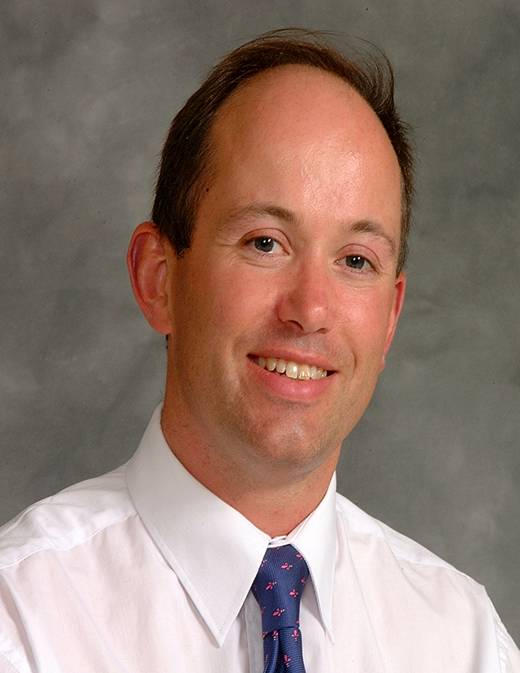
Professor PJ Morrison. Editor 2005-
CONFLICT OF INTEREST
The author was editor of the Ulster Medical Journal from 1984–1995.
REFERENCES
- 1.Hickey EM. A plea for the myxoedematous. Ulster Med J. 1932;1(1):52–53. [PMC free article] [PubMed] [Google Scholar]
- 2.Editorial. Ulster Doctors and the War. Ulster Med J. 1943;12(1):1–4. [PMC free article] [PubMed] [Google Scholar]
- 3.Editorial. “The editor”. Ulster Med J. 1943;12(1):5. [PMC free article] [PubMed] [Google Scholar]
- 4.Morrison PJ. Colour vision. Ulster Med J. 2006;75(1):1–2. [PMC free article] [PubMed] [Google Scholar]
- 5.Strain RWM. University Square – a sentimental retrospect. Ulster Med J. 1969;38(1):1–33. [PMC free article] [PubMed] [Google Scholar]
- 6.Strain RWM. The heraldry of medicine. Ulster Med J. 1947;16(2):138–141. [PMC free article] [PubMed] [Google Scholar]
- 7.Hadden DR. The Ulster medical journal meets the Vancouver Group. Ulster Med J. 1993;62(1):2–3. [Google Scholar]
- 8.Morrison PJ. We are like Dwarfs standing [or sitting] upon the shoulders of giants…. Ulster Med J. 2005;74(2):73–4. [Google Scholar]
- 9.Gibson JM. A note from the editor. Ulster Med J. 1996;65(1):4. [Google Scholar]
- 10.Gibson JM. The Ulster Medical Journal Index. Ulster Med J. 1998;67(2):78. [Google Scholar]
- 11.Logan JI. Ulster Med J. 2002;72(1):1. http://www.ums.ac.uk. [PMC free article] [PubMed] [Google Scholar]
- 12.Morrison PJ, Crickard M. Taking issue with Vancouver style into the 21st Century. Ulster Med J. 2005;74(2):81. [Google Scholar]



